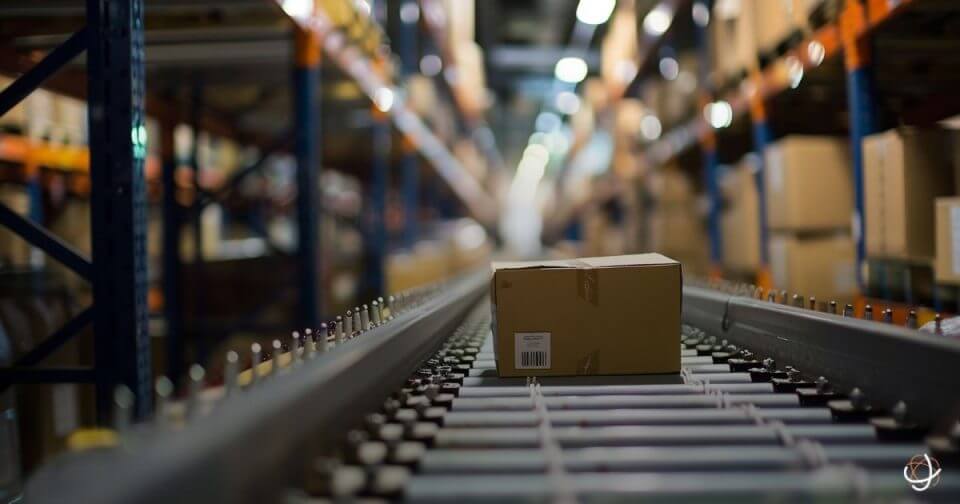
How Vendor Managed Inventory (VMI) Strengthens Supply Chain Resilience and Collaboration
To optimize inventory management, retailers and suppliers are increasingly turning to Vendor Managed Inventory (VMI) tools that transfer the responsibility…
Generix Ushers in a New Era of Intelligent Commerce for Retailers with AI-Driven Innovation Read the press release

At its core, warehousing supports the movement of goods through the supply chain, ensuring products are stored, handled, and distributed efficiently. This connection goes beyond simply housing inventory—warehouses serve as pivotal points where products are sorted, consolidated, and readied for transport to distribution centers, retailers, or directly to consumers.
When warehousing is well-integrated with other parts of the supply chain, such as transportation and procurement, businesses can achieve faster order fulfillment, reduce operational costs, and optimize stock levels. Additionally, efficient warehousing ensures that companies can meet growing demands while maintaining minimal disruptions in product flow.

Warehousing is more than just storage. It is a hub for various supply chain activities supporting product flow, inventory management, and order fulfillment. By strategically positioning warehouses near distribution centers or customer locations, businesses can reduce transportation costs, minimize delays, and more effectively meet customer expectations.
Additionally, warehouses often serve as consolidation points, bringing products from different suppliers together to streamline delivery. This integration enables businesses to optimize transportation routes and improve overall supply chain efficiency.

While warehousing is vital to the supply chain, traditional warehousing methods often present significant challenges. Many businesses still need to rely on manual processes and outdated systems, leading to inefficiencies, errors, and increased costs. These obstacles highlight the need for more advanced solutions and technology-driven warehousing approaches.
To address these challenges, businesses must adopt modern technologies that streamline warehousing operations and integrate them with the wider supply chain. Solutions such as Warehouse Management Systems (WMS), automated storage and retrieval systems (AS/RS), and cloud-based platforms are essential for improving efficiency and reducing the risks associated with traditional warehousing practices.

Integrating warehousing and supply chain technology is vital for operational success in an increasingly digital world. Advanced technologies like WMS, Transportation Management Systems (TMS), and cloud-based solutions enable real-time communication and visibility across supply chain functions.
By leveraging insights, automation, and predictive analytics, businesses can streamline warehousing processes, minimize errors, and optimize inventory management. These technologies improve warehousing efficiency and enhance overall supply chain agility, enabling faster response times and improved customer service.
Businesses must adopt comprehensive supply chain solutions to optimize warehousing and its role within the supply chain fully. These solutions integrate warehousing processes with other critical functions, such as transportation, inventory management, and order fulfillment, creating a seamless flow of goods from production to delivery. By connecting these processes, companies can reduce operational costs, improve efficiency, and ensure faster response times to changes in demand. Additionally, optimized warehousing solutions enable better resource utilization, minimize delays, and enhance customer satisfaction through more accurate and timely deliveries. Leveraging advanced technologies such as automation, data analytics, and cloud-based platforms ensures that warehousing operations remain agile and scalable, keeping pace with the demands of an ever-evolving market.
A WMS automates and streamlines key warehouse operations, from receiving to shipping, ensuring that workflows are optimized for speed and accuracy. This system also improves inventory control by providing real-time updates on stock levels, helping prevent shortages or overstocking, and enhancing order fulfillment efficiency.
A TMS enhances logistics by providing visibility into transportation routes and optimizing shipping schedules, ensuring that products move smoothly from warehouse to destination. By integrating transportation with warehouse operations, businesses can reduce transit times, lower costs, and improve on-time delivery performance.
AS/RS improves efficiency by automating product storage and retrieval, reducing the need for manual labor and minimizing handling errors. These systems also optimize space utilization, allowing warehouses to store more products in a smaller footprint, which leads to cost savings and improved operational scalability.
ERP systems connect warehousing with other business processes, offering a centralized platform for managing procurement, manufacturing, and distribution activities. Integrated data allows businesses to streamline communication across departments, improve decision-making, and enhance overall operational efficiency.
Cloud-based solutions enable real-time data sharing and collaboration across supply chain stakeholders, improving visibility and decision-making. These platforms also provide scalability and remote accessibility, making it easier for businesses to manage global operations and respond quickly to supply chain disruptions.
Building a resilient supply chain starts with warehousing in an era of unpredictable market changes. Proactive strategies can help businesses maintain steady operations and respond to sudden shifts in demand or disruptions in the supply chain.
As industries embrace digital transformation, the role of warehousing in the supply chain will continue to evolve. The future lies in further automation, artificial intelligence (AI), and advanced analytics that will drive greater efficiency, accuracy, and speed.
For example, AI-powered solutions will help businesses better forecast demand and optimize inventory management, while robotic process automation (RPA) can streamline repetitive warehouse tasks. The growing use of Internet of Things (IoT) devices in warehousing will further enhance real-time visibility, making it easier to track inventory and shipments.
Effective warehousing and supply chain integration are crucial for maintaining operational efficiency, reducing costs, and meeting customer expectations in today’s fast-paced market. Leveraging advanced technologies, adopting collaborative strategies, and building resilient warehouse networks are essential steps toward supply chain optimization.
At Generix, we provide industry-leading supply chain solutions that empower businesses to optimize their warehousing operations and drive efficiency across the entire supply chain. Our innovative, cloud-based technologies help companies stay agile, competitive, and ready to meet the challenges of the future.

To optimize inventory management, retailers and suppliers are increasingly turning to Vendor Managed Inventory (VMI) tools that transfer the responsibility…

In an ever-evolving logistics environment, agile and precise warehouse resource management is essential to remain competitive. With increasing volumes driven…

France’s electronic invoicing reform relies on a Y-architecture, where Partner Dematerialization Providers (PDPs) play a central role in issuing and…

Work with our team to build your ideal supply chain software stack and tailor it to your unique business needs.